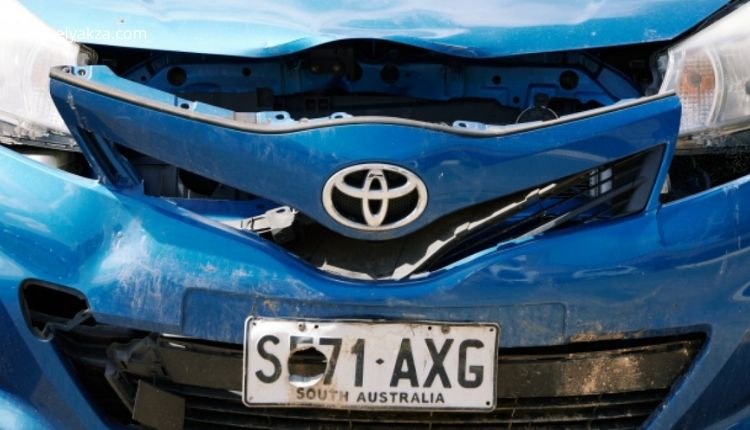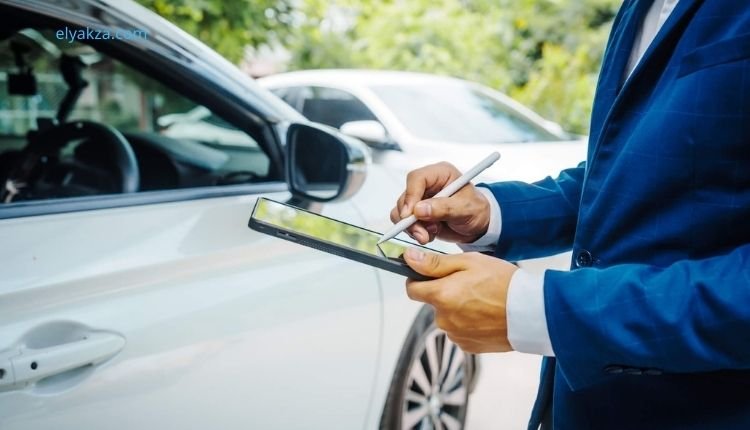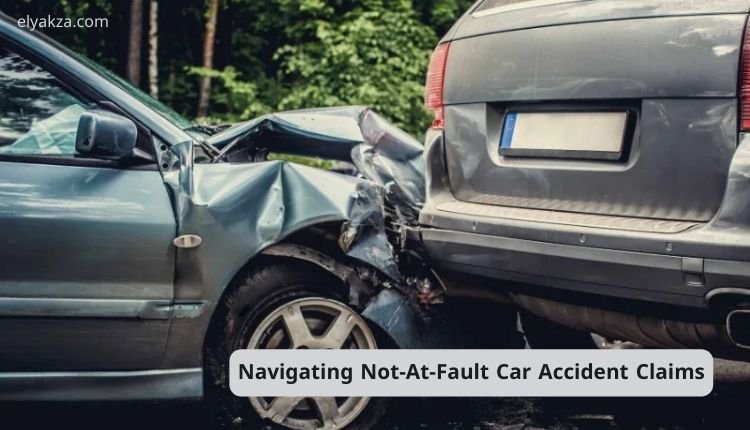Being involved in a car accident is a stressful experience, but when you are not at fault, the subsequent claims process can feel overwhelmingly complex. You’re left dealing with property damage, potential personal injuries, and the daunting task of navigating insurance companies, all while trying to recover from the incident.
قائمة المحتويات
This guide, drawing insights from over two decades of representing accident victims, provides a clear, step-by-step roadmap for handling your not-at-fault car accident claim, applicable whether you’re in Georgia or nearly any other state across the country. Our aim is to equip you with the knowledge and strategies to protect your rights and ensure a fair resolution.
Immediate Steps at the Scene of the Accident
The moments immediately following an accident are critical. What you do and document at the scene can significantly impact the success of your claim.
Secure a Police Report
Calling the police to the scene of any accident, even minor ones, is paramount. The police report serves as an independent, official record of the incident, which is invaluable for your claim. This document goes beyond simply noting that a collision occurred.
- Official Documentation: A police officer’s report includes crucial details such as the date and time of the wreck, the exact location, and often a diagram illustrating how the accident happened based on their investigation and witness statements. This independent assessment of fault is highly beneficial.
- Essential Information Collection: The report will contain the full name, address, telephone number, and, most importantly, the insurance information of the at-fault party. Relying on the other driver to willingly provide accurate information can be risky. The police ensure this critical data is collected properly, enabling you to file a claim with their insurance company promptly.
- Witness Identification: If there are witnesses, the police officer should identify them and record their contact information and statements. Witnesses can provide unbiased accounts of the accident, strengthening your position. If the officer notes witnesses but doesn’t include their contact details, follow up with the officer to obtain their notes and witness information.
Document the Scene Thoroughly
In today’s digital age, your smartphone is one of your most powerful tools after an accident. Documentation helps piece together the narrative and prove your case.
- Photographs and Videos: Take numerous photographs and videos from various angles. Capture the damage to both vehicles, the positions of the cars, road conditions, traffic signs, skid marks, debris, and any surrounding landmarks. These visual records can vividly demonstrate the impact and the scene’s layout.
- Preserving the Scene (If Safe): If possible and safe, avoid moving the vehicles until the police have arrived and you’ve thoroughly documented the scene. This preserves critical evidence of how the collision occurred.
“Read Also: Personal Injury Law“
Post-Accident Actions: Protecting Your Rights
Once the initial shock subsides, a series of proactive steps are necessary to safeguard your health and your legal claim.

Prioritize Your Health
Your well-being should always be the top priority. Even if you don’t feel immediate pain, adrenaline can mask injuries.
- Seek Medical Attention Immediately: If you feel any pain or discomfort, or even if you’re just unsure, go to the hospital or see a doctor as soon as possible. Some injuries, like whiplash or concussions, may not manifest symptoms for hours or even days. Prompt medical evaluation creates an official record of your injuries linked directly to the accident, which is crucial for any personal injury claim.
Notify Your Own Insurance Company Promptly
Even though you are not at fault, it is critically important to notify your own insurance company about the accident immediately. This step is often overlooked but can be a lifeline if the at-fault driver is uninsured or underinsured.
- Preserving Potential Claims: Your state likely has specific deadlines for notifying your insurer to preserve certain coverages, such as Uninsured/Underinsured Motorist (UM/UIM) coverage. For example, in Georgia, case law suggests a 90-day window. Missing this deadline could jeopardize your ability to claim benefits from your policy later if the at-fault driver’s insurance is insufficient.
- Information Sharing: Provide your insurer with the police report and all the details you’ve gathered. While you hope never to need your own policy for a not-at-fault accident, putting them on notice ensures they are prepared if circumstances dictate their involvement.
Initiating a Claim with the At-Fault Driver’s Insurer
Once you have the at-fault driver’s insurance information from the police report, you should initiate a claim with their company without delay.
- Proactive Claim Setup: Don’t wait for the other party to contact their insurer. Utilize the information from the police report or the card the officer might have given you at the scene to call the at-fault party’s insurance company directly and open a claim.
- Why Not Wait? While the at-fault driver might notify their insurance, there’s no guarantee. If they don’t, you could be waiting indefinitely. Taking immediate action puts the process in motion and avoids unnecessary delays.
“Read Also: Personal Injury Cases“
Understanding the Property Damage Claim Process
The property damage portion of your claim is often the quickest to resolve, as it involves tangible, quantifiable losses.

Decline Recorded Statements
A common tactic by liability insurance adjusters is to request a recorded statement from you. Our advice is unequivocal: do not give one.
- For Their Benefit, Not Yours: These statements are solely for the insurance company’s benefit. Adjusters are trained to ask questions in a way that might elicit responses they can later use against you, potentially minimizing your claim. In many states, including Georgia, you are not legally obligated to provide a recorded statement to the at-fault driver’s insurer.
- Maintain Control: Politely decline, stating you will provide all necessary information in writing or through other means, but not via a recorded statement. They must still process your claim.
Expediting Vehicle Inspection and Valuation
After notification, the insurance company will want to assess the damage to your vehicle. Speed is key here.
- Prompt Inspection: Arrange for the insurer to inspect your vehicle as quickly as possible. Whether your car is at a tow yard, your home, or a repair shop, ensure they can access it. Many insurers now accept detailed photographs in lieu of an in-person inspection.
- Total Loss vs. Repairable: The insurer will determine if your vehicle is a “total loss” (cost to repair exceeds its fair market value) or if it’s repairable. Follow up after a day or two if you haven’t heard back, as you want this decision made swiftly to move forward.
Addressing Loss of Use and Rental Vehicles
During the repair or replacement process, you will likely be without your vehicle, leading to “loss of use.”
- Rental Car Arrangement: Immediately address the need for a rental car with the at-fault party’s insurer. They might initially say they need to investigate, but remember, every day without your car is a loss of use for which they are responsible. Be proactive in securing a rental, either through them or by covering it yourself and seeking reimbursement.
Repair Decisions and Diminished Value
If your vehicle is repairable, you have choices regarding where and how it’s fixed.
- Choosing a Repair Shop: You have the legal right to choose your own repair shop. While using an insurer’s “preferred” shop might expedite payment, it could also mean less control over the repair process. Using your own trusted shop might involve more administrative steps (like the check being sent to you first), but ensures you oversee the quality of repairs and the use of Original Equipment Manufacturer (OEM) parts, which is crucial for safety and resale value.
- Diminished Value Claim: Even after perfect repairs, a vehicle involved in a significant accident often suffers from “diminished value” – its resale value is lower simply because it has a crash history. This is a legitimate claim you should pursue. Be prepared for resistance, as insurers often try to minimize these payouts.
“Read About: Injury Law“
Navigating the Personal Injury Claim
Personal injury claims typically take longer to resolve than property damage claims because they involve human recovery and often a period of medical treatment.
Cruciality of Consistent Medical Treatment
Your health and recovery are paramount. Consistent and appropriate medical treatment is also essential for your personal injury claim.
- Treat as Needed: Seek all necessary medical treatment for your injuries. Don’t over-treat, but definitely don’t under-treat or delay treatment. Medical records are the backbone of your personal injury claim, documenting the extent of your injuries, the treatment received, and your progress (or lack thereof).
- Medical Records and Bills: Keep meticulous records of all doctor visits, therapies, medications, and any other injury-related expenses.
Avoiding Early Settlement Offers
A common tactic from adjusters is to offer a quick, low settlement early in the process. This is often referred to as the “quick money trap.”
- Don’t Settle Prematurely: Insurance companies might offer a small sum (e.g., $1,500) or agree to cover bills up to a certain low amount (e.g., $5,000) in exchange for a full release. Do NOT accept these offers. You likely won’t know the full extent of your injuries or the total cost of treatment until well after the accident. Settling too early means you forfeit your right to claim additional damages if your injuries worsen or require more extensive treatment than initially anticipated.
- Long-Term Strategy: Personal injury claims require a “long game” approach. Focus on your recovery first. Settle only when your medical treatment is complete, and you have a clear understanding of your prognosis and total damages.
Documenting Your Injuries and Damages
To build a strong personal injury claim, comprehensive documentation is vital.
- Gather All Evidence: Collect all medical records, bills, receipts for out-of-pocket expenses related to your injuries, and proof of any lost wages (e.g., from work, self-employment) due to the accident.
- Beyond Economic Damages: Remember to document non-economic damages as well, such as pain and suffering, emotional distress, and loss of enjoyment of life. While harder to quantify, these are significant components of your claim.
Negotiation and Resolution with the Bodily Injury Adjuster
Once your treatment is complete and all damages are documented, you will negotiate with a bodily injury adjuster (often a different individual than the property damage adjuster).
- Presenting Your Case: Submit a demand package to the adjuster, including all medical records, bills, lost wage documentation, and a clear articulation of your pain and suffering.
- Negotiation Process: The adjuster will review your submission, make arguments about what’s related or not, and then begin negotiations. Be prepared for back-and-forth discussions to reach a fair settlement that covers all your damages.
The Critical Role of Uninsured/Underinsured Motorist Coverage (UM/UIM)
One of the most vital takeaways from navigating accident claims is the importance of your own Uninsured/Underinsured Motorist (UM/UIM) coverage.
The Reality of Uninsured Drivers
Despite legal requirements, a significant percentage of drivers on the road operate without insurance. States like Georgia and Louisiana, for instance, have alarmingly high rates of uninsured drivers.
- Legal vs. Reality: It’s illegal to drive without insurance, but it happens frequently. If you’re hit by an uninsured driver, their liability insurance won’t cover your damages.
- Underinsured Drivers: Even if the at-fault driver has insurance, their policy limits might be insufficient to cover your damages. State minimums (e.g., $25,000 for property damage and $25,000 for personal injury in Georgia) are often grossly inadequate for serious accidents. An $85,000 new vehicle totaled by a driver with only $25,000 property damage coverage leaves you $60,000 short. Similarly, serious injuries requiring extended treatment or surgery can quickly exceed minimum personal injury limits.
How UM/UIM Coverage Protects You
UM/UIM coverage is your safety net against these scenarios. It’s designed to step in when the at-fault driver either has no insurance (uninsured) or not enough insurance (underinsured) to cover your losses.
- Augmenting the At-Fault Policy: UM/UIM acts as an extension of coverage, adding to what the at-fault driver’s insurance provides. This can apply to both property damage and personal injury claims. For example, if you have $50,000 in UM/UIM bodily injury coverage and the at-fault driver only has $25,000, your UM/UIM can kick in to cover the additional $25,000 or more (depending on your specific policy) after their policy limits are exhausted.
- Your Own Insurer Steps In: In essence, your own insurance company pays out as if they were the at-fault driver’s insurer, protecting you from significant financial hardship.
The Crucial Notification for UM/UIM
This is why notifying your own insurance company, even if you’re not at fault, is so incredibly important. You must put them on notice within your policy’s or state’s required timeframe to preserve your right to claim UM/UIM benefits. While you hope to never need it, it’s a critical component of your financial protection.
“Read Also: Car Accident Lawyers“
Not-At-Fault Car Accident: The Conclusion
Being the victim of a not-at-fault car accident can be a harrowing experience, fraught with uncertainty about property repairs, medical bills, and legal procedures. By understanding and diligently following the steps outlined in this guide – from immediate scene documentation and securing a police report, to navigating property damage and personal injury claims, and critically, recognizing the value of your own UM/UIM coverage – you empower yourself.
These insights, forged over two decades of legal experience, are designed to demystify the claims process, helping you protect your rights, ensure fair compensation, and focus on your recovery. Remember, proactive steps and thorough documentation are your best allies in successfully navigating this challenging journey.
John George is a professional writer focused on legal advice and attorney guides, offering practical and easy-to-understand content that helps readers navigate complex legal topics. His work covers various areas such as contracts, business law, family law, and consumer rights, always aiming to simplify legal concepts for everyday readers.
Through his articles, John provides step-by-step guides, insightful tips, and detailed explanations that empower readers to make informed decisions when dealing with legal matters. He bridges the gap between legal professionals and individuals seeking clarity in their legal journey.
John is committed to promoting accessible legal knowledge and believes that everyone deserves reliable information to protect their rights. His writing style combines professionalism with clarity, making his work a valuable resource for both individuals and small businesses.

